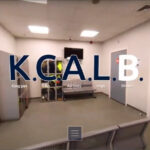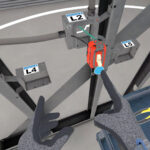Celebrating 20 Years of Innovation, the Company Expands its VIROO Platform and Welcomes Simumatik to Drive Enterprise XR Adoption
Virtualware continues to shine, following the firm’s 20-year veteran history of providing RT3D and immersive software solutions for enterprise clients in fields that include, but are not limited to, process training, product engineering, academic education, and marketing.
Rolling into 2025, Virtualware looks to leverage that success by tackling various strategic challenges posed by the firm’s multi-product approach to VIROO, its RT3D content creation platform.
Virtualware looks to boost VIROO as a global benchmark for the use of enterprise XR in the second half of 2025, an effort only bolstered by 2024 milestones.
Sergio Barrera, the CTO of Virtualware, added:
“When we started developing VIROO over five years ago, we never imagined it would become an essential platform for dozens of leading organizations in industries such as energy, automotive, and education. Today, every day, numerous users worldwide use VIROO to train in industrial processes or carry out advanced product engineering tasks.”
VIROO Gains Deep Technology Considerations
Following its landmark 20th anniversary, Virtualware underwent many advancements toward its vision of providing businesses with expert immersive tools.
Barrera also added:
“Our VIROO technology, recognized as one of the most innovative in Real-Time 3D by industry awards, continues to evolve, incorporating improvements driven by listening to our customers. This results in new capabilities that further enhance its impact.”
Namely, the VIROO Studio product gained new usability features to streamline its use as an editing tool for RT3D immersive content, boosting accessibility and democratisation for clients looking to build bespoke XR content.
Moreover, in the wake of AndroidXR, Virtualware is reacting accordingly by refining VIROO’s deployment abilities by enabling application publishing on standalone Android-based end-devices.
Virtualware is actively working to evaluate how AndroidXR will affect the enterprise market, which comes just days after a major AndroidXR showcase at TED2025.
Last year, Google introduced AndroidXR, a new immersive operating system. During the announcement, they highlighted the importance of Gemini AI assistants in enhancing user interactions with the headset and its visualisations.
Built on a familiar Android foundation, this XR operating system supports a wide range of existing mobile/tablet applications and specially designed Android XR content. This development addresses a significant barrier to the broader adoption of XR technology: users need access to various applications and engaging services to justify investing in an XR device.
In an official press release, Google notes its plans to create a foundation for developers to leverage AndroidXR solutions for “the diverse needs of people and businesses,” painting a strong avenue of opportunity for Virtualware.
VIROO now also includes the integration of the XR Interaction Toolkit to enable Unity project migration onto the platform and unifying the VIROO user interface within the Unity development environment.
The ongoing growth of Unity and Android support ensures clients the power to deliver cross-platform sessions in which users can interact with a VIROO creation from various end devices, such as Meta Quest, Vive Focus, and PICO.
Alongside the Unity and Android standalone XR devices support, VIROO also introduced new cloud Backend services that help improve core elements of an XR session deployment, including information security, accessibility, and platform scalability.
Virtualware Grows via Key Acquisitions
As Virtualware grows, the firm becomes busy during key acquisition periods, such as the recent Simumatik merger, which is a leader in industrial digital twin content creation.
The move marked Virtualware’s first inorganic growth operation, expanding its product portfolio and strengthened its position in industrial visualisation, just as Virtualware redefined itself as an RT3D leader.
Speaking of the Simumatik acquisitions, Barrera said:
“VIROO is already a benchmark product in the XR field, but not our only one. The acquisition of Simumatik and its integration into our portfolio strengthens us as a company, expands our presence in the industrial sector, and reinforces our diversification strategy.”
By emulating automation systems, Simumatik provides a cutting-edge way to develop digital twins of industrial spaces and works with prominent PLC and robot technologies.
The tool’s powerful editor allows for integrating diverse new technologies and manufacturers.
VIROO’s infrastructure has enabled Simumatik’s complex simulation environments, including hardware and software dependencies, to be accessed and shared remotely.
The combination of VIROO and Simumatik means users can now collaborate and engage with PLC signals across vast distances on any VIROO-supported device, such as laptops, desktops, VR headsets, multi-user virtual spaces, and CAVE systems.
The Future is Bright for Virtualware
But what does all this mean for Virtualware and the XR industry at large?
It shows how the space is continuing to mature, and it also shows the growing demand for enterprise XR and RT3D solutions to boost operational efficiency across the board.
If firms like Virtualware continue to react to the movements of the XR industry, by 2026, the market’s maturity will bring plenty of new offerings to businesses worldwide.
Quelle:


